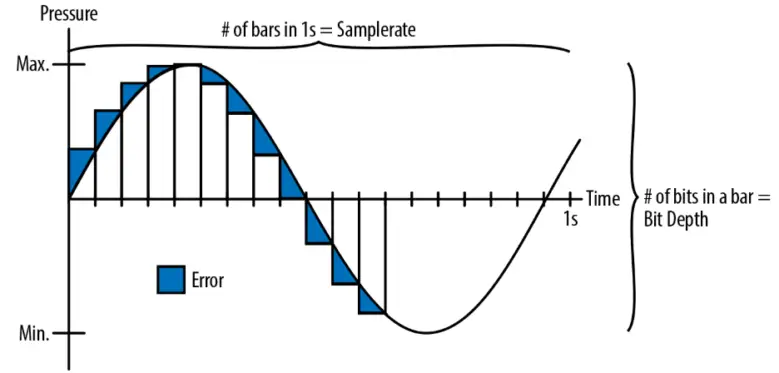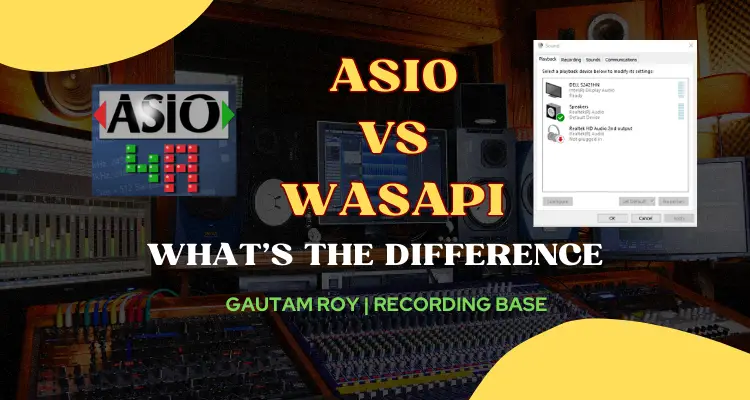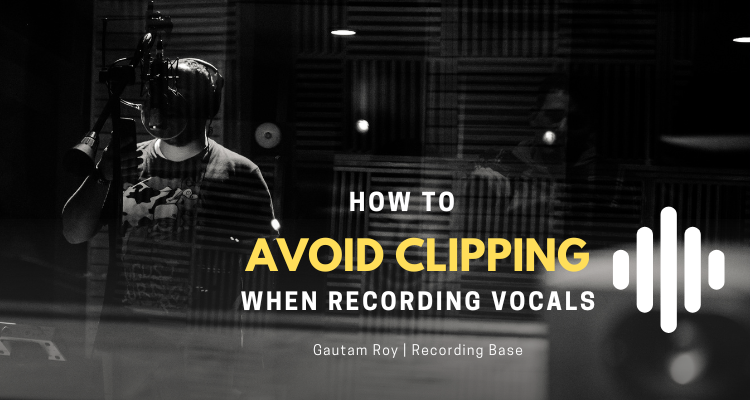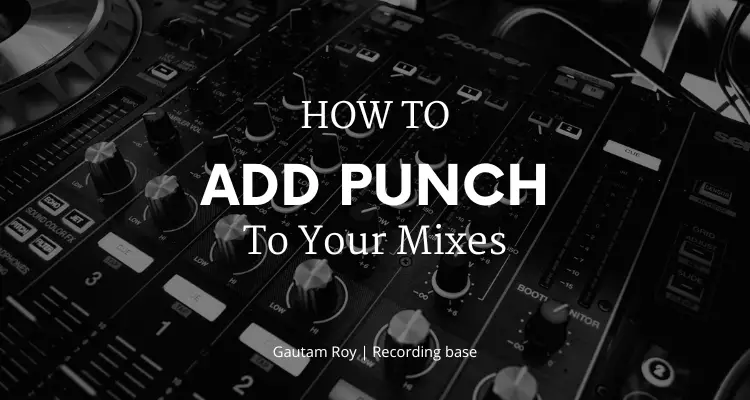Audio recording is a combination of technology and art. As an audio recordist, you should master both technology and art and use that knowledge for the best outcome. The “art” section I have discussed in several previous articles. BUT, today this post is purely dedicated to the technology part of audio recording.
When it comes to audio recording technology, the most confusing terms you encounter are “Sample rate” and “Bit Depth”. Especially beginners are so confused about using the right Sample rate and bit depth in recording studios.
There is a myth that a higher sample rate and bit depth would give better audio quality. SO, I’ve decided to give you all the information about the sample rate and bit depth.
This article is a detailed guide about bit depth and sample rate. After reading this article you can easily decide what sample rate and bit depth should you use in recording studio.
SO, read this article till the end.
Well, first off…
Table of Contents
What is Sample Rate (Sampling rate) in Audio Recording?
Sample rate is an easy term of sampling frequency or sampling rate of audio which defines the number of samples per second taken from a continuous analog audio signal to convert make a discrete or digital signal.
If you’ve learned about sound in high school then you might know that audio signals travel in waveforms and measured in Hertz (Hz). According to Nyquist principle, the perfect reconstruction of a signal in the digital domain is only possible when the sampling frequency is greater than twice the maximum frequency of the signal being sampled.
Disclosure: This post may contain affiliate links, which means we may receive a commission if you click a link and purchase something that we recommended. Read more about Affiliate disclosure here.
That means as the human audible range is up to 20,000Hz, the minimum sample rate of preservation of audio in the digital domain is 40,000Hz. Hence we find the lowest sample rate in any audio device 44,100Hz.
Have you noticed, in the audio interface, there are sample rates 44.1, 48, 88.2, 96, 176.4, 192 kHz? These all are higher than the human audible range.
What Sample Rate Should you use in Recording Studio?
SO, if there are so many sample rates to choose from in audio interfaces then which sample rate you should use in home studios?
Choosing the right sample rate is really confusing for beginners as audio recorded in higher sample rates captures more space in your computer.
The Myth
Most of us think, sample rates above 96kHz deliver more quality audio.
Actually, there’s a rumor that higher sample rates will add more quality to audio.
Is that true?
The reality about ideal Sample rate
If you would ask me about it, I would say yes and no. Here I want to give reference to the International Association of Sound and Audiovisual Archives (IASA) who says “for some types of noise, sampling rates in excess of 48 kHz may be advantageous. For any higher sampling rates, IASA recommends 96 kHz.”
That means, for some types of noises 48kHz sample rate is sufficient whether some types of noises 96kHz or above gives a better result.
Remember: Higher sample rates remove noises from the audio. SO, in some cases, you will end up with dry and tasteless audio that can’t be filled with any external effect. So, using lower sample rates for those types of audio signals is ideal.
The storage capacity and computational power of your computer also play a big role in choosing the ideal sample rate for your recording studio. If you are using sample rates higher than 96kHz then I would suggest using at least a Pentium i7 processor, 16GB RAM, and 1 TB SSD harddisk.
For home studies, I would reccomend use sample rates between 48kHz to 96kHz with a good dithering plugin.
For more information about audio recording computers, you can refer to my guide,
What is Bit Depth in Audio Recording?
Now let us discuss Bit-depth of audio file.
Bit depth is the number of possible amplitude values in a digital audio sample. Actually, analog audio is a continuous wave that has infinite possible amplitude values, where digital audio where the wave is stored in binary form, we have to define the wave’s finite amplitude values each time when we sample it.

That’s the reason why Bit-depth of a digital audio file is very important when it comes to the quality of audio.
Most common bit-depths used in digital audio recording is 16-Bit (65,536 values), 24-Bit(16,777,216 values) and 32-Bit(4,294,967,296 values).
As you can see that each time when 8 bits added the possible amplitude values increases 100’s of times.
That’s the reason why higher bit-depth audio serves better quality than lower bit-depth audio.
What about Bit Depth in terms of audio qualiy?
Yes, bit-depth affects a lot on audio quality. As you’ve seen above, when bit-depth increases from 16-bits to 24-bits the number of possible amplitude values increases hundreds of times.
SO, a higher bit-depth digital audio wave becomes closer to the analog audio than a lower bit-depth audio file.
Conclusion: Sample rate and Bit Depth in recording studios
When you are working as a professional audio engineer or music producer, it’s very important for you to understand the role of sample rate and bit-depth in audio recording.
The quality of an audio file is very dependent upon these two things. So, choosing the right bit-depth and sample rate is crucial.
I hope this article has provided you enough information regarding these factors.
You may also like,




![What is Microphone Gain [Complete Guide About Microphone Gain]](https://www.recordingbase.com/wp-content/uploads/2022/01/microphone-gain.png)

